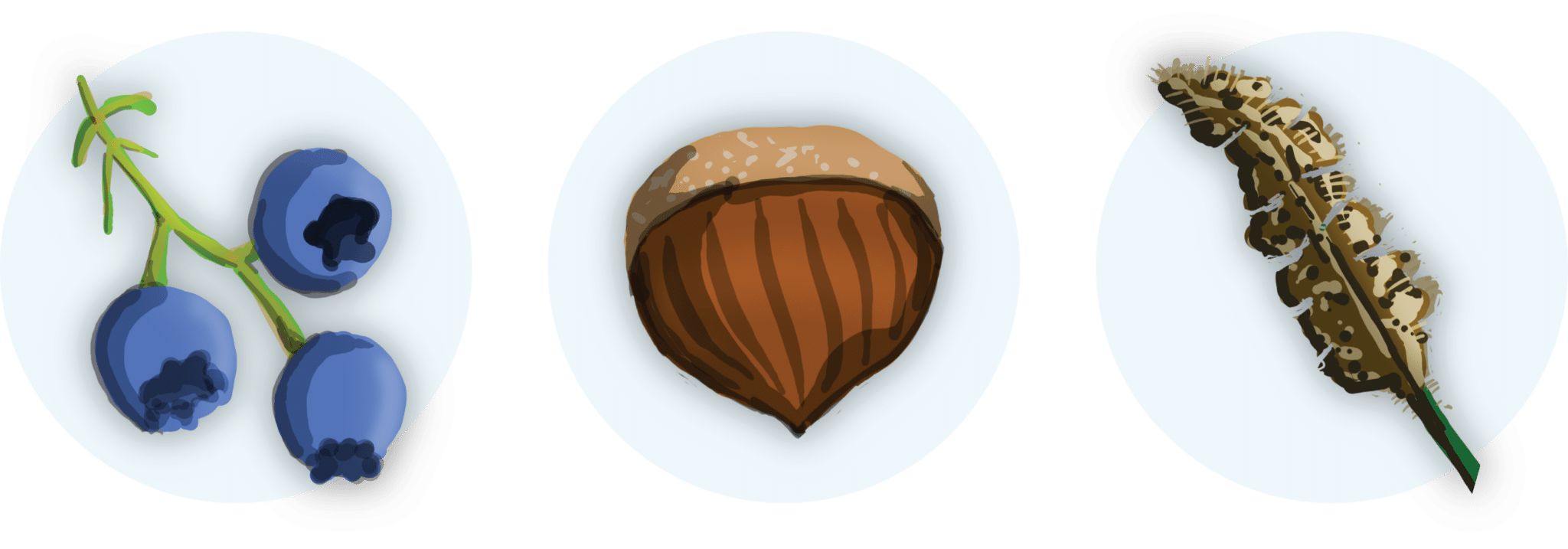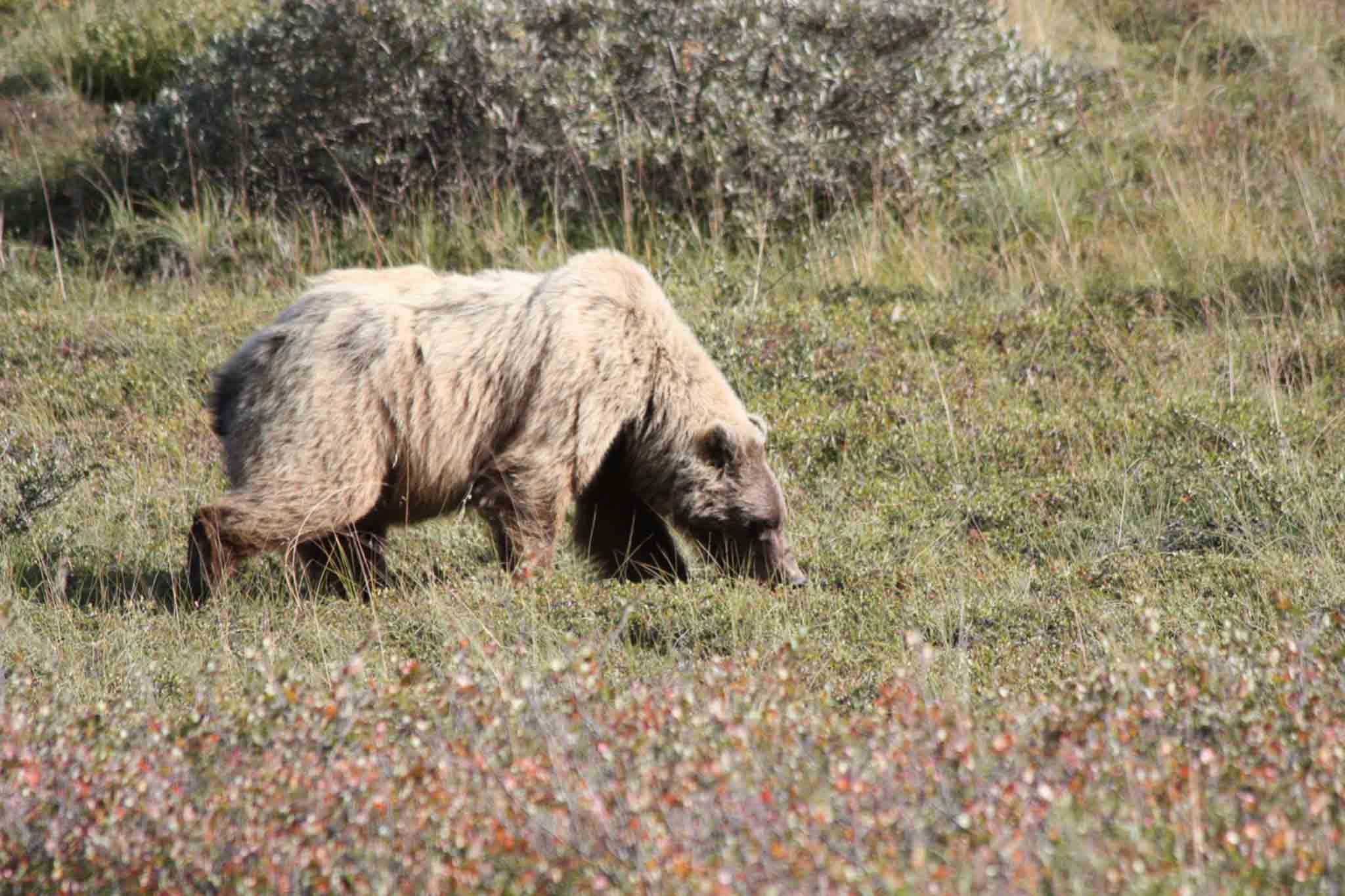Foraging Guide: How to Find Food in the Wild
My first guide to foraging was my dad, and our first discovery was simple. The yard was covered in a dark green ‘weed’ with purple things sticking out the top. He showed me how to pluck those purple pieces off and sip their nectar, which was obviously super cool to little 6-year-old me!
Now I know that I could’ve just gone ahead and eaten the entire thing to get a ton of iron, fiber, and vitamins. It’s called Henbit and is highly nutritious.
My interest in foraging has only grown over the years. While I know I’ll never master everything, it’s so empowering to identify new wild foods as I go about my daily life.
Care to join me? Let’s jump in and get some basics under your belt.

What is foraging?
Foraging is all about knowing which plants, mushrooms, nuts, berries, blossoms, roots, and fruits are safe to eat and gathering them for consumption. Having a mindset of a forager keeps you intimately connected to your natural surroundings and grateful for the abundance the earth provides.
It’s an art form, really. For many, it’s a way of life.
Foraging has seen a boom in popularity recently, and hobbyists love taking to the woods on free weekends in search of morels, wild blackberries, and sunchokes. Popular content creators like Alexis Nikole are making the practice fun and, most importantly, accessible.
Education is extremely important, and there are a lot of valuable resources to turn to. All of them can work together to ensure you, as Alexis says, “don’t die!” This brings us to the first and most common question that gets asked about foraging.
Is foraging safe?
Foraging is as safe as you are educated. Your safety as you wander forests and fields is dependent on your knowledge. The more you have, the more confidently you can consume.
Thankfully, you don’t have to feel like a horticulture expert to get started. Wild edibles are regional, so you can start by researching what’s common in your area. Familiarize yourself with a few safe species and make sure there aren’t toxic look-alikes. If there are, study their differences! Then, hit the trails on a short hike in search of something you can add to your evening meal when you get back home.
Taking short excursions into the practice of foraging will keep you from feeling overwhelmed and protect against hasty judgment calls.

What are the risks of foraging?
Many foraging mistakes end with only mild intestinal discomfort. But serious consequences can follow the consumption of highly toxic plantlife. And, since some perfectly fine plants have toxic look-alikes, it’s vital to your health and well-being to take the activity seriously.
Medicinal? Or Toxic?
For example, my pasture last summer yielded a crop of aesthetically pleasing and curious clusters of white flowers atop long, sturdy stems. I pulled out my plant identification app and discovered that I had yarrow on my hands!
That was exciting, considering the medicinal applications of that species. BUT… you can’t just trust an app that’s working off AI and a single picture. So, I dug deeper.
As it turns out, yarrow looks similar to water hemlock, AKA the “Poison Parsnip”. Hemlock is often considered the most poisonous plant in North America. The entire plant – flowers, leaves, stem, and root – contains a poison that attacks the central nervous system.
It can kill you in a matter of hours.
That’s how important it is to take your time and research thoroughly before eating anything! Thankfully, I was able to learn about the difference in stem shape, leaf texture, and growing areas to become confident that I did, indeed, have yarrow on my land.
Why should backpackers know how to forage?
When Grandma Gatewood set out to walk the Appalachian Trail, she carried a denim sack tossed over her shoulder and a meager food supply. For long stretches of the trail, she relied entirely on berries, nuts, and wild greens for sustenance.
While it’s important to plan your food carefully before heading out on a backpacking adventure, having knowledge about wild food options can be incredibly helpful.
Imagine having the luxury of a salad 10 days after leaving the trailhead. Or fresh berries to add to your morning oatmeal. Or root veggies to bulk up your dehydrated soup mix.
Foraging can make your food stash stretch further or simply add to your mealtime pleasure. It could even keep you alive if you run into trouble and end up without supplies deep in the wilderness

Food You Can Find in the Wild
People focus on five common categories when learning how to forage. Each one is a study in and of itself, and some are easier than others. Let’s take a quick look at each one.
- Berries
- They’re either delicious or distressing, and there’s not a lot of in-between. Thankfully, many are a part of our everyday life since production has been industrialized. Much of North America has a favorable climate for wild berries, so finding them during the late spring and early summer is common.
- Toxic look-alikes to research include nightshade (can be confused for blueberries), moonseed (grow on a vine, like grapes), and pokeberries (a truly unique plant with attractive-looking berries.) Some include red baneberry in this list, claiming it looks like a strawberry… but I just don’t see it!
- Mushrooms
- Mushrooms are possibly the most polarizing of the foraging categories. They have a reputation for being extremely dangerous. But given how abundantly the safe varieties can grow, it’s definitely worth the effort to study them. If you know what you’re doing, you can make an entire meal from a single patch of fungi. Choose a couple of common species and focus on them.
- Toxic look-alikes to research include jack-o-lanterns (similar in color and texture to chanterelles), destroying angels (casual observers may think they’ve found field mushrooms), and false morels. Since mushrooms continue changing throughout their life cycle, they can be challenging to identify confidently. Understand the difference between a young, newly emerged mushroom and one that’s been around long enough to change shape and color.
- Plants
- The huge variety in taste, texture, and availability makes tackling the plant category quite the undertaking. You can find everything from the wild equivalents of our common grocery store lettuces to the unappealing but nutritious pine bark. The good thing about the vastness of plant life is that there’s plenty of opportunity for you to learn what’s good and what could leave a bitter taste in both your mouth and the overall experience. Zero in on what’s prolific in your area and during the season you’re exploring.
- Toxic look-alikes to research include young foxglove (which can look like young, pre-bloom purple deadnettle) and ponderosa pine (which can have toxic needles and bark, unlike white pine.)
- Nuts
- Stumble on a nut tree, find two hard surfaces for cracking, and enjoy some high-calorie snacks straight from Nature herself. This category is the easiest to master since the variety is so much smaller. In fact, it’s so short that there’s only one kind of nut to beware. But what you may find interesting is that there are options out there you may not have thought of eating… like acorns!
- The only toxic look-alike to understand is the horse chestnut, which can be confused for the sweet chestnut you’re used to singing about and eating ar winter holidays.
- Roots
- Going underground for calories, vitamins, and minerals is so commonplace when you think about it. Why shouldn’t we find wild equivalents of beets, carrots, parsnips, and onions? There’s a wide variety of edible roots you can expect to find in the wilderness, so plan on devoting a decent amount of time to exploring your options. Identifying the above-ground plant is how you’ll know what you’ll find digging!
- Toxic look-alikes to beware of include water hemlock (can be mistaken for wild carrots during its dormant stage) and death camas (not easily mistaken during its flowering peak, but can look like wild onions when entering the growing season and after wilting in fall.)
Besides these commonly used wild food sources, you can also turn to insects for protein. Crickets and grasshoppers are underutilized in North America, but you don’t have to turn a blind eye when on the trail. Scoop them up and snack away if you’re game!
I don’t know, though… I’d probably consider that ‘hunting’ instead of foraging.
Where to Find Food in the Wild
Different food sources prefer different ecosystems. Just ask any gardener, and they’ll tell you. What suits the dill makes the carrots cry. Strawberries hate cabbage. And so on… It’s not as much about two types of plants interfering with one another as it is about them needing different things from their environments.
Berries tend to grow in partial shade environments like forests and mountain slopes. Mushrooms need moisture, decaying matter, and cooler temperatures provided by dense overhead canopies and piles of leaves.
You can get even more specific than that, though. Certain types of berries, like huckleberries, NEED shade to become prolific producers. Mushrooms are picky about what types of wood they like and what temperatures will trigger their growth.
Study your specific location or destination to get to know where to look for species you want to enjoy!
This foraging guide is a starting point.
The art of foraging is an exciting way to connect with Nature. Cultures all around the world used to practice as a way of life, and I love seeing it become more and more mainstream in my generation. Maybe we’ll resurrect it fully, becoming proficient in our ability to safely identify the earth’s bounty and let it enhance our lives.
Consider this article a jumping-off point. There are a number of excellent resources to continue your education, including online guides and tons of books you can have mailed to your doorstep.
Happy foraging, friends!
Author Profile

Jessica Cockroft
Jess merges her passion for words and an insatiable longing for adventure as an outdoor freelance content writer and marketer. When she’s not busy stringing words together you’ll probably find her planning another camping trip for her crew of kids or taking care of the homestead. You can find her on LinkedIn and Instagram, as well as on her own website.



